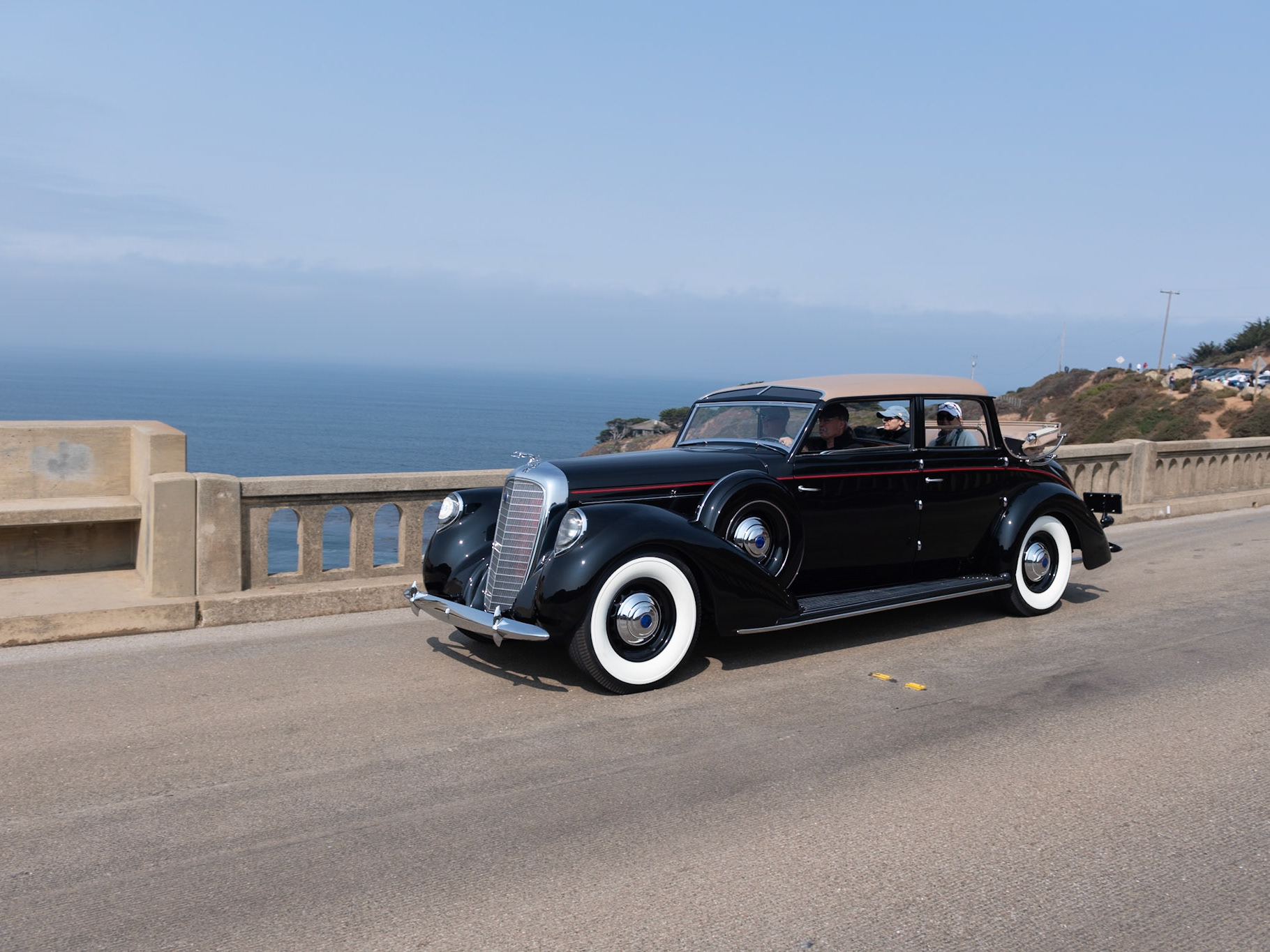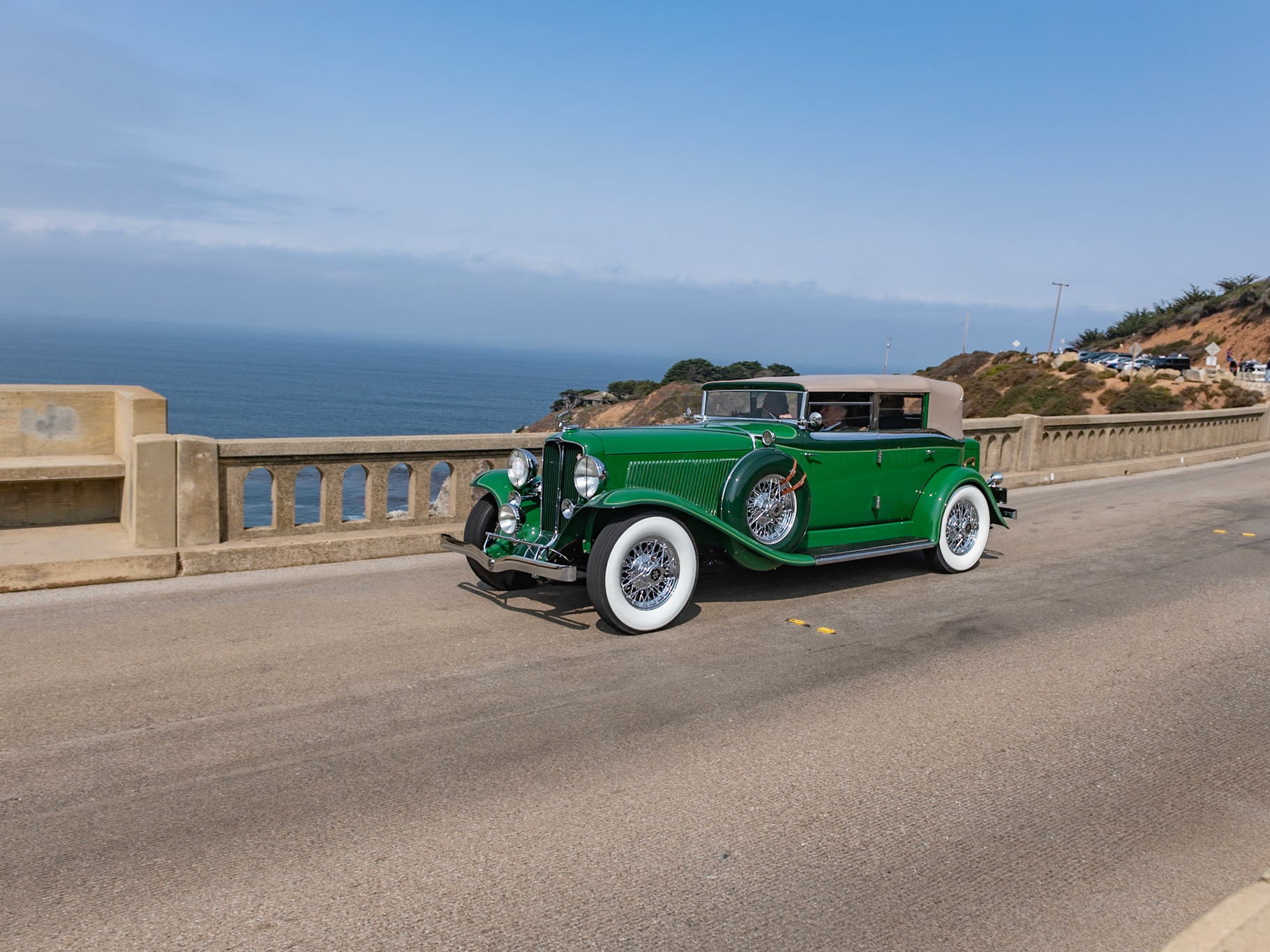
The first Shelby Cobra, introduced in 1962, was powered by Ford’s 4.3-liter, V8 260 engine. Later Cobras were fitted with the 4.7-liter V8 289 that caused such a stir on the racetrack. The 427 Cobra Mk III was the further continuation of Carroll Shelby’s original dream of “Corvette-beaters.” It incorporated an immensely powerful big-block 7-liter engine delivering about 450 bhp. As with all original Cobras, the chassis and unpainted bodies were built by AC Cars in England and shipped to the Shelby American factory in Los Angeles to be finished as either road cars or racing versions. A road-going 427 Cobra is a rare car; less than 260 built, and this example (chassis CSX3108) has survived in its original condition. It was one of the first ten 427s to be completed by Shelby, and the early 427s, with their original rear-exhaust pipes and Halibrand wheels, are considered the most desirable.

This car (chassis CSX 2005) is the fifth Cobra built; the AC factory listed its build date as July 17, 1962, and it was invoiced to Shelby American that September. It was featured in the 1964 film The Killers, a Universal Studios production based in part on a short story by Ernest Hemingway and starring Lee Marvin, Angie Dickinson, Ronald Reagan and John Cassavetes. In 1964 it was sent to the newly opened Carroll Shelby School of High Performance Driving at Riverside Raceway, where it was driven by many aspiring celebrity race drivers, including Steve McQueen and James Garner as well as a Miss Universe. Here the Roadster is presented in its school uniform of light blue metallic paint complete with its distinctive large letter T for Trainer. Its original body panels and hand-stamped and numbered fittings have all been restored to be exactly as the car was when running around Riverside Raceway.

The first Shelby Cobra, introduced in 1962, was powered by Ford’s 4.3-liter, V8 260 engine. Later Cobras were fitted with the 4.7-liter V8 289 that caused such a stir on the racetrack. The 427 Cobra Mk III was the further continuation of Carroll Shelby’s original dream of “Corvette-beaters.” It incorporated an immensely powerful big-block 7-liter engine delivering about 450 bhp. As with all original Cobras, the chassis and unpainted bodies were built by AC Cars in England and shipped to the Shelby American factory in Los Angeles to be finished as either road cars or racing versions. A road-going 427 Cobra is a rare car; less than 260 built, and this example (chassis CSX3108) has survived in its original condition. It was one of the first ten 427s to be completed by Shelby, and the early 427s, with their original rear-exhaust pipes and Halibrand wheels, are considered the most desirable.

This car (chassis CSX 2005) is the fifth Cobra built; the AC factory listed its build date as July 17, 1962, and it was invoiced to Shelby American that September. It was featured in the 1964 film The Killers, a Universal Studios production based in part on a short story by Ernest Hemingway and starring Lee Marvin, Angie Dickinson, Ronald Reagan and John Cassavetes. In 1964 it was sent to the newly opened Carroll Shelby School of High Performance Driving at Riverside Raceway, where it was driven by many aspiring celebrity race drivers, including Steve McQueen and James Garner as well as a Miss Universe. Here the Roadster is presented in its school uniform of light blue metallic paint complete with its distinctive large letter T for Trainer. Its original body panels and hand-stamped and numbered fittings have all been restored to be exactly as the car was when running around Riverside Raceway.

This car (chassis CSX 2005) is the fifth Cobra built; the AC factory listed its build date as July 17, 1962, and it was invoiced to Shelby American that September. It was featured in the 1964 film The Killers, a Universal Studios production based in part on a short story by Ernest Hemingway and starring Lee Marvin, Angie Dickinson, Ronald Reagan and John Cassavetes. In 1964 it was sent to the newly opened Carroll Shelby School of High Performance Driving at Riverside Raceway, where it was driven by many aspiring celebrity race drivers, including Steve McQueen and James Garner as well as a Miss Universe. Here the Roadster is presented in its school uniform of light blue metallic paint complete with its distinctive large letter T for Trainer. Its original body panels and hand-stamped and numbered fittings have all been restored to be exactly as the car was when running around Riverside Raceway.

This car (chassis CSX 2005) is the fifth Cobra built; the AC factory listed its build date as July 17, 1962, and it was invoiced to Shelby American that September. It was featured in the 1964 film The Killers, a Universal Studios production based in part on a short story by Ernest Hemingway and starring Lee Marvin, Angie Dickinson, Ronald Reagan and John Cassavetes. In 1964 it was sent to the newly opened Carroll Shelby School of High Performance Driving at Riverside Raceway, where it was driven by many aspiring celebrity race drivers, including Steve McQueen and James Garner as well as a Miss Universe. Here the Roadster is presented in its school uniform of light blue metallic paint complete with its distinctive large letter T for Trainer. Its original body panels and hand-stamped and numbered fittings have all been restored to be exactly as the car was when running around Riverside Raceway.

The Ford GT40 Mark IIB was the final and most sophisticated version of the legendary GT40 race car, and this is one of only two surviving examples. At the 24 Hours of Le Mans in 1966 this GT40 (chassis P/1047), driven by Dan Gurney and Jerry Grant, was favored to win. Sadly, at just over 17 hours, the car blew a head gasket and retired. The next race for the car was at Daytona, then it appeared again at Le Mans in 1967, prepared by Holman and Moody, painted gold, and driven by Frank Gardner and Roger McCluskey—but again the car retired, this time after 13 hours. After that race, the car was shipped back to Holman and Moody, who stored it until 1972, then it was sold to a Japanese collector who kept it unused for another 40 years. In 2009 the car was shipped to the United States for a full restoration, which was completed in 2012.

The Ford GT40 Mark IIB was the final and most sophisticated version of the legendary GT40 race car, and this is one of only two surviving examples. At the 24 Hours of Le Mans in 1966 this GT40 (chassis P/1047), driven by Dan Gurney and Jerry Grant, was favored to win. Sadly, at just over 17 hours, the car blew a head gasket and retired. The next race for the car was at Daytona, then it appeared again at Le Mans in 1967, prepared by Holman and Moody, painted gold, and driven by Frank Gardner and Roger McCluskey—but again the car retired, this time after 13 hours. After that race, the car was shipped back to Holman and Moody, who stored it until 1972, then it was sold to a Japanese collector who kept it unused for another 40 years. In 2009 the car was shipped to the United States for a full restoration, which was completed in 2012.

The Ford GT40 Mark IIB was the final and most sophisticated version of the legendary GT40 race car, and this is one of only two surviving examples. At the 24 Hours of Le Mans in 1966 this GT40 (chassis P/1047), driven by Dan Gurney and Jerry Grant, was favored to win. Sadly, at just over 17 hours, the car blew a head gasket and retired. The next race for the car was at Daytona, then it appeared again at Le Mans in 1967, prepared by Holman and Moody, painted gold, and driven by Frank Gardner and Roger McCluskey—but again the car retired, this time after 13 hours. After that race, the car was shipped back to Holman and Moody, who stored it until 1972, then it was sold to a Japanese collector who kept it unused for another 40 years. In 2009 the car was shipped to the United States for a full restoration, which was completed in 2012.


















